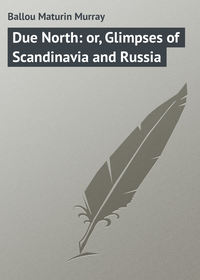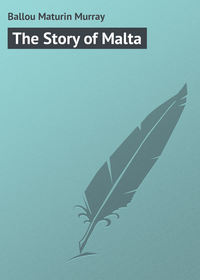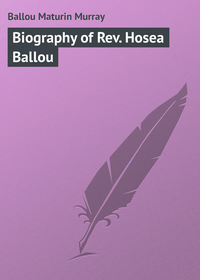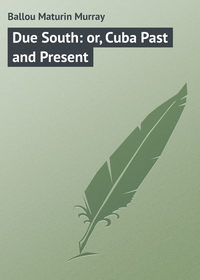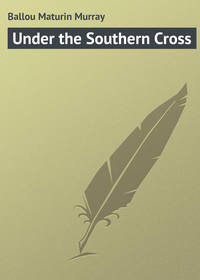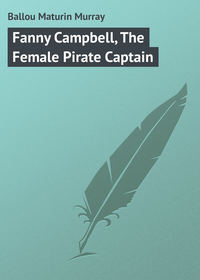 полная версия
полная версияFoot-prints of Travel: or, Journeyings in Many Lands
It will be remembered that to this island England banished Arabi Pacha after the sanguinary battlefield of Tel-el-Keber. It is one of the most interesting spots in the East, having been in its prime centuries before the birth of Christ. It was perhaps the Ophir of the Hebrews, and it still abounds in precious stones and mineral wealth. Here we observe the native women strangely decked with cheap jewelry thrust through the tops and lobes of their ears, in their lips and nostrils, while about their necks hang ornaments consisting of bright sea-shells, mingled with sharks' teeth. If we go into the jungle, we find plenty of ebony, satin-wood, bamboo, fragrant balsam, and india-rubber trees; we see the shady pools covered with the lotus of fable and poetry, resembling huge pond-lilies; we behold brilliant flowers growing in tall trees, and others, very sweet and lowly, blooming beneath our feet. Vivid colors flash before our eyes, caused by the blue, yellow, and scarlet plumage of the feathered tribe. Parrots and paroquets are seen in hundreds. Storks, ibises, and herons fly lazily over the lagoons, and the gorgeous peacock is seen in his wild condition. The elephant is also a native here, and occasionally hunts are organized upon a grand scale and at great expense by English sportsmen who come here for the purpose, and who pay a heavy fee for a license.
Ceylon lies just off the southern point of India; and though it is a British colony, its government is quite distinct from that of the mainland. It forms a station for a large number of troops, and is about three times the size of Massachusetts.
Many of the native women are employed by the large number of English families resident here, especially by officers' wives, as nurses. These last seem to form a class by themselves, and they dress in the most peculiar manner, as we see the children's nurses dressed in Rome, Paris, and Madrid. The Singhalese nurses wear a single white linen garment covering the body to the knees, very low in the neck, with a blue cut-away velvet jacket covered with silver braid and buttons and open in front, a scarlet silk sash gathering the under-garment at the waist. The legs and feet are bare, the ankles covered with bangles, or ornamental rings, and the ears heavily weighed down and deformed with rings of silver and gold.
The vegetation of Ceylon is what might be expected of an island within so few miles of the equator; that is, beautiful and prolific in the extreme. The cinnamon fields are so thrifty as to form a wilderness of green, though the bushes grow but four or five feet in height. The cinnamon bush, which is a native here, is a species of laurel, and bears a white, scentless flower, scarcely as large as a pea. The spice of commerce is produced from the inner bark of the shrub, the branches of which are cut and peeled twice annually. The plantations resemble a thick, tangled undergrowth of wood, without any regularity, and are not cultivated after being properly started. Ceylon was at one time a great producer of coffee, and still exports the berry, but a disease which attacked the leaves of the shrub has nearly discouraged the planters. Among the wild animals are elephants, deer, monkeys, bears, and panthers – fine specimens of which are preserved in the excellent museum at Colombo. Pearl oysters are found on the coast, and some magnificent pearls are sent to Paris and London.
The bread-fruit tree is especially interesting, with its feathery leaves, and its melon-shaped fruit, weighing from three to four pounds. This, the natives prepare in many ways for eating, and as the tree bears fruit continually for nine months of the year, it forms a most important food-supply. Two or three trees will afford nourishment for a hearty man, and half a dozen well cared for will sustain a small family, a portion of the fruit being dried and kept for the non-producing months. Banana groves, and orchards bending under the weight of the rich, nutritious fruit, tall cocoanut-trees with half a ton of ripening nuts in each tufted top, ant-hills nearly as high as native houses, rippling cascades, small rivers winding through the green valleys, and flowers of every hue and shape, together with birds such as one sees preserved in northern museums, – all these crowd upon our vision as we wander about inland.
Ceylon is rich in prehistoric monuments, showing that there once existed here a great and powerful empire, and leading us to wonder what could have swept a population of millions from the face of the globe and have left no clearer record of their past. The carved pillars, skilfully wrought, now scattered through the forest, and often overgrown by mammoth trees, attest both material greatness and far-reaching antiquity. It would seem as though nature had tried to cover up the wrinkles of age with blooming and thrifty vegetation.
We embark at Colombo for Adelaide, the capital of South Australia, steering a course south by east through the Indian Ocean for a distance of about thirty-five hundred miles. On this voyage we find the nights so bright and charming that hours together are passed upon the open deck studying the stars. Less than two thousand can be counted from a ship's deck by the naked eye, but with an opera-glass or telescope the number can be greatly increased. Among the most interesting constellations of the region through which we are now passing, is the Southern Cross. For those not familiar with its location, a good way to find the Cross is to remember that there are two prominent stars in the group known as Centaurus that point directly towards it. That farthest from the Cross is regarded as one of the fixed stars nearest to the earth, but its distance from us is twenty thousand times that of the sun. Stellar distances can be realized only by familiar comparison. For instance: were it possible for a person to journey to the sun in a single day, basing the calculation upon a corresponding degree of speed, it would require fifty-five years to reach this fixed star! Probably not one-half of those who have sailed beneath its tranquil beauty are aware that near the upper middle of the cross there is a brilliant cluster of stars which, though not visible to the naked eye, are brought into view with the telescope. In these far southern waters we also see what are called the Magellanic Clouds, which lie between Canopus and the South Pole. These light clouds, or what seem to be such, seen in a clear sky, are, like the "Milky Way," visible nebulæ, or star-clusters, at such vast distance from the earth as to have by combination this effect upon our vision.
At sea the stars assume perhaps a greater importance than on land, because from them, together with the sun, is obtained latitude and longitude, and thus by their aid the mariner determines his bearings upon the ocean. Forty or fifty centuries ago the Chaldean shepherds were accustomed to gaze upon these shining orbs in worshipful admiration, but with no idea of their vast system. They were to them "the words of God, the scriptures of the skies." It has been left to our period to formulate the methods of their constant and endless procession. All of the principal stars are now well known, and their limits clearly defined upon charts, so that we can easily acquire a knowledge of them. The inhabitants of North America have the constellation of Ursa Major, or the Great Bear, and the North Star always with them; they never wholly disappear below the horizon. When the mariner sailing north of the equator has determined the position of the "Great Bear," two of whose stars, known as "the pointers," indicate the North Star, he can designate all points of the compass unerringly. But in the far South Sea they are not visible; other constellations, however, whose relative positions are as fixed in the Southern Hemisphere, become equally sure guides to the watchful navigator.
Having landed in Australia, before proceeding to visit the several cities of this great island-continent which possesses an area of nearly three millions of square miles, let us review some general facts and characteristics of the country. So far as we can learn, it was a land unknown to the ancients, though it is more than probable that the Chinese knew of the existence of Northern Australia at a very early period; but until about a century ago, it presented only a picture of primeval desolation. The hard work of the pioneer has been accomplished, and civilization has rapidly changed the aspect of a large portion of the great south land. To-day this continent is bordered by thrifty seaports connected by railroads, coasting-steamers, turnpikes, and electric telegraphs. It is occupied by an intelligent European population numbering between three and four millions, possessing such elements of political and social prosperity as place them in an honorable position in the line of progressive nations. So favorable is the climate that nearly the whole country might be turned into a botanical garden. Indeed, Australia would seem to be better entitled to the name of Eldorado (a mythical country abounding in gold), so talked of in the sixteenth century, than was the imaginary land of untold wealth so confidently believed by the adventurous Spaniards, to exist somewhere between the Orinoco and the Amazon.
This new home of the British race in the South Pacific, surrounded by accessible seas and inviting harbors, inspires us with vivid interest. We say "new," and yet, geologically speaking, it is one of the oldest portions of the earth's surface. While a great part of Europe has been submerged and elevated, crumpled up as it were into mountain chains, Australia seems to have been undisturbed. It is remarkable that in a division of the globe of such colossal proportions there was found no larger quadruped than the kangaroo, and that man was the only animal that destroyed his kind. He, alas! was more ferocious than the lynx, the leopard, or the hyena; for these animals do not prey upon each other, while the aborigines of Australia devoured one another.
What America was to Spain in the proud days of that nation's glory Australia has been to England, and that too, without the crime of wholesale murder, and the spilling of rivers of blood, as was the case in the days of Cortez and Pizarro. The wealth poured into the lap of England by these far-away colonies belittles all the riches which the Spaniards realized by the conquests of Mexico and Peru. Here is an empire won without war, a new world called into existence, as it were, by moral forces, an Eldorado captured without the sword. Here, Nature has spread her generous favors over a land only one-fifth smaller than the whole continent of Europe, granting every needed resource wherewith to form a great, independent, and prosperous nation; where labor is already more liberally rewarded, and life more easily sustained, than in any other civilized country except America. It is difficult to believe while observing the present population, wealth, power, and prosperity of the country at large, characterized by such grand and conspicuous elements of empire, that it has been settled for so brief a period, and that its pioneers were from English prisons. The authentic record of life in the colonies of Australia and Tasmania during the first few years of their existence, is mainly the account of the control of lawless men by the strong and cruel arm of military despotism.
Up to the present writing Australia has realized from her soil over three hundred and thirty millions of pounds sterling, or $1,650,000,000. Her territory gives grazing at the present time to over seventy-five million sheep, which is probably double the number in the United States. When it is remembered that the population of this country is sixty millions, and that Australia has not quite four millions, the force of this comparison becomes obvious. The aggregate amount of wool exported to the mother country is twenty-eight times as much as England has received in the same period from the continent of Europe. The combined exports and imports of the United Kingdom of Great Britain and Ireland are a little over one hundred dollars per annum for each one of the population. In Australia the aggregate is a trifle over two hundred dollars per head. The four principal capitals of Australia contain over eight hundred thousand inhabitants. The railroads of the country have already cost over two hundred million dollars, and are being extended annually. New South Wales has in proportion to its population a greater length of railways than any other country in the world, while there are some thirty thousand miles of telegraph lines within the length and breadth of the land.
The country is divided into five provincial governments: New South Wales, Victoria, Queensland, South Australia, and West Australia. The island of Tasmania forms another province, and is separated from Victoria by Bass's Strait, the two being within half a day's sail of each other. Sydney is the capital of New South Wales; Melbourne, of Victoria; Adelaide, of South Australia; Brisbane, of Queensland; Perth, of West Australia; and Hobart, of Tasmania. It may be remarked incidentally that South Australia would more properly be designated by some other title, as it is not South Australia at all. Victoria lies south of it, and so does a portion of West Australia. The government of these several divisions is modelled upon that of New South Wales, which is in fact the parent colony of them all.
New South Wales is governed under a constitution, having two houses of Parliament. The first, a legislative council, is composed of a limited number of members nominated by the Crown, and who hold office for life; the second, or legislative assembly, is composed of members elected by the people and chosen by ballot. All acts, before becoming law, must receive the approval of the Queen of England, though this is nothing more than a mere form. There is a resident governor in each colony, also appointed by the Queen.
As compared with our own land, we find this to be one of strange contradictions. Here, the eagles are white and the swans are black; the emu, a bird almost as large as an ostrich, cannot fly, but runs like a horse. The principal quadruped, the kangaroo, is elsewhere unknown; and though he has four legs, he runs upon two. When the days are longest with us in America, they are shortest here. To reach the tropics, Australians go due-north, while we go due-south. With us the seed, or stone, of the cherry forms the centre of the fruit; in Australia, the stone grows on the outside. The foliage of the trees in America spreads out horizontally; in this south-land the leaves hang vertically. When it is day with us it is night with them. There, Christmas comes in mid-summer; with us in mid-winter. Bituminous and anthracite coal are with us only one color, – black; but they have white bituminous coal, – white as chalk. The majority of trees with us shed their leaves in the fall of the year; with them they are evergreen, shedding their bark and not their leaves.
Adelaide is situated about seven miles from the sea, and is surrounded by an amphitheatre of hills rearing their abrupt forms not far away from the town. The capital is so perfectly level that to be seen to advantage it must be looked upon from some favorable elevation. The colony should be known as Central Australia, on account of its geographical position. It is destined in the near future to merit the name of the granary of the country, being already largely and successfully devoted to agriculture. This pursuit is followed in no circumscribed manner, but in a large and liberal style, like that of our best Western farmers in the United States. Immense tracts of land are also devoted to stock-raising for the purpose of furnishing beef for shipment to England in fresh condition. This province contains nearly a million square miles, and is therefore ten times larger than Victoria, and fifteen times larger than England. It extends northward from the temperate zone, so that nearly one-half of its area lies within the tropics, while it has a coast-line of five hundred miles along the great Southern Ocean. A vast portion of its interior is uninhabited, and indeed unexplored. The total population of the whole colony is about four hundred thousand. Wheat, wool, wine, copper, and meat are at present the chief exports. Over four million acres of land are under the plough. Though gold is found here, it is not so abundant as in other sections of the country. Good wages equalling those realized by the average miners are earned by a dozen easier and more legitimate occupations than that of gold-digging. "Let us cherish no delusions," said a San Francisco preacher on a certain occasion; "no society has ever been able to organize itself in a satisfactory manner on gold-bearing soil. Even Nature herself is deceitful; she corrupts, seduces, and betrays man; she laughs at his labor, she turns his toil into gambling, and his word into a lie!" The preacher's deductions have proved true as regards bodies of miners in California, South Africa, New Zealand, and Australia. And yet the finding of gold mines has stimulated labor, immigration, and manly activity in many directions, and has thus been the agent of undoubted good in other fields than its own.
Adelaide, with a population of a hundred and fifty thousand, has a noble university, quite equal in standing to that of any city in the country. When we remember how youthful she is, it becomes a matter of surprise that such a condition has been achieved in all the appointments which go to make up a great city in modern times. The same remark applies to all of the Australian capitals, none of which are deficient in hospitals, libraries, schools, asylums, art galleries, and charitable institutions generally. Few European cities of twice the size of these in Australia can boast a more complete organization in all that goes to promote true civilization.
The city proper is separated from its suburbs by a belt of park-lands, and the approaches are lined with thrifty ornamental trees. Great liberality and good judgment presided over the laying out of Adelaide. All the streets are broad and regular, running north and south, east and west. There are no mysterious labyrinths, dark lanes, or blind alleys in the city; the avenues are all uniform in width. It is believed that the interior of the continent, which is largely embraced within this province, was at a comparatively recent period covered by a great inland sea. Here are still found mammoth bones of animals, now extinct, which have become an object of careful study to scientists. Africa's interior is scarcely less explored than is Central Australia. There are thousands of square miles upon which the foot of a white man has never trod. Tartary has its steppes, America its prairies, Egypt its deserts, and Australia its "scrub." The plains, so called, are covered by a low-growing bush, compact and almost impenetrable in places, composed of a dwarf eucalyptus. The appearance of a large reach of this "scrub" is desolate indeed, the underlying soil being a sort of yellow sand which one would surely think could produce nothing else; yet, wherever this land has been cleared and properly irrigated it has proved to be remarkably fertile.
All of these colonial cities have botanical gardens, in the cultivation and arrangement of which much skill and scientific knowledge is displayed. In that of Adelaide we see the Australian bottle-tree, which is a native of this country only. It receives its name from its resemblance in shape to a junk-bottle. This tree has the property of storing water in its hollow trunk, – a well-known fact, which has often proved a providential supply for thirsty travellers in a country so liable to severe drought. Here, also, we see the correa, with its stiff stem and prickly leaves, bearing a curious string of delicate, pendulous flowers, red, orange, and white, not unlike the fuchsia in form. The South Sea myrtle is especially attractive, appearing when in flower with round clustering bunches of bloom, spangled with white stars. The styphelia, a heath-like plant, surprises us with its green flowers. We are shown a specimen of the sandrach-tree, brought from Africa, which is almost imperishable, and from which the Mohammedans invariably make the ceilings of their mosques. The Indian cotton-tree looms up beside the South American aloe – this last, with its thick, bayonet-like leaves, is ornamented in wavy lines like the surface of a Toledo blade. The grouping of these exotics, natives of regions so far apart on the earth's surface, yet quite domesticated here, forms an incongruous though pleasing picture.
West Australia, of which Perth is the capital, is eight hundred miles in width and thirteen hundred long from north to south, actually covering about one-third of the continent. It embraces all that portion lying to the westward of the one hundred and twenty-ninth meridian of east longitude, and has an area of about a million square miles. It has few towns and is very sparsely settled, Perth having scarcely eleven thousand inhabitants, and the whole province a population of not over forty-two thousand. Pearl oysters abound upon its coast and form the principal export, being most freely gathered near Torres's Strait, which separates Australia from New Guinea. The latter is the largest island in the world, being three hundred and sixty miles in width by thirteen hundred in length. Its natives are considered the most barbarous of any savages of the nineteenth century.
From Adelaide to Melbourne is about six hundred miles, a distance accomplished by railway. The first sight of Melbourne will surprise the stranger, though he may be fairly well-informed about this capital of Victoria. No one anticipates beholding so grand a capital in this far-away region of the Pacific. Where there was only a swamp and uncleared woods a few years ago, there has risen a city containing to-day a population of four hundred and twenty thousand, embracing the immediate suburbs. This capital is unsurpassed by any of the British colonies in the elegancies and luxuries of modern civilization, such as broad avenues, palatial dwellings, churches, colossal warehouses, banks, theatres, public buildings, and pleasure grounds. It is pleasant to record the fact that one-fifth of the revenue raised by taxation is expended for educational purposes. Of few cities in the new or the old world can this be truthfully said. Universities, libraries, public art-galleries, and museums do not lack for the liberal and fostering care of the government. No city, if we except Chicago and San Francisco, ever attained to such size and importance in so short a period as has Melbourne.
The river Yarra-Yarra runs through the town, and is navigable for large vessels to the main wharves, where it is crossed by a broad and substantial bridge. Above the bridge the river is handsomely ornamented with trees upon its borders; here the great boat-races take place, one of the most popular of all local athletic amusements, and Melbourne is famous for out-door sports of every form, especially ball-playing.
The activity of the streets is remarkable. English cabs rattle about or stand in long rows awaiting patrons; four-wheeled vehicles of an awkward style, also for hire, abound; messenger-boys with yellow leather pouches strapped over their shoulders hurry hither and thither; high-hung omnibuses with three horses abreast, like those of Paris and Naples, dash rapidly along, well filled with passengers; men gallop through the crowd on horseback, carrying big baskets of provisions on their arms; dog-carts, driven by smart young fellows with a servant behind them in gaudy livery, cut in and out among the vehicles; powerful draught-horses stamp along the way, drawing heavily-laden drays; milk-carts with big letters on their canvas sides make themselves conspicuous, and so do the bakers' carts; while light and neat American wagonettes glide rapidly along among less attractive vehicles. Now and then a Chinaman passes, with his peculiar shambling gait, with a pole across his shoulders balancing his baskets of "truck"; women with oranges and bananas for a penny apiece meet one at every corner, and still the sidewalks are so broad, and the streets so wide, that no one seems to be in the least incommoded. The fruit stores present a remarkable array of tempting fruits, among which are the mandarin and seedless oranges, apricots, green figs, grapes, passion-fruit, pineapples, bananas, and many others, all in fine condition. With the exception of the cities of California, nowhere else can fruit of such choice varieties and so cheap be found as at Melbourne.


